When trading in the hustle and bustle of everyday life for a precision hunting experience with a side of natural beauty, have you ever considered exploring the art of Montana duck hunting?
The sky’s vast canvas and the gentle lapping of water against the shore offer a sturdy backdrop to Montana’s many waterfowl species on parade. Ducks, geese, swans, coots, and more await under the big Montana sky in a dramatic dance of life often ending in a sporting challenge.
In this article, you’ll learn about the wide variety of waterfowl that calls Montana home, the best places to hunt ducks, licenses and fees, regulations, and even how to identify duck species — providing you with everything you need for a successful and ethical waterfowl journey.
- Related article: Best Time for Montana Hunting
So, whether you’re a novice looking to understand the basics, a seasoned veteran keen on brushing up on specific techniques, or a prospective visitor intrigued by the unique offerings of Montana’s waterfowl scenes, this ultimate starter’s guide to Montana duck hunting will cover all the fundamentals, and then some.
Ready to get started? Grab your waders, pack the decoys, and start your adventure into the bountiful Montana skies.
7 Key Takeaways on Montana Duck Hunting
- Each duck species in Montana adds a unique touch to the hunting experience, with the Mallard, Wood Duck, and Pintail among the most common and exciting to spot.
- Montana Puddle Ducks, like the Mallard and Cinnamon Teal, are typically found in shallow waters and can be easily identified by their specific wing and body features.
- Diving ducks in Montana frequent expansive water bodies and are skilled at underwater foraging, including the notable Goldeneye and Redhead.
- Female duck species, known as hens, have unique characteristics and are an interesting aspect of duck hunting.
- From wildlife refuges and production areas to state wildlife spots, Montana offers a variety of ideal hunting grounds.
- The requirements and costs for legal duck hunting in Montana include mandatory federal and state licenses.
- Key dates for duck hunting in Montana and essential regulations are designed to preserve wildlife while ensuring a safe and enjoyable hunting experience.
Montana Duck Species

Montana’s wild frontier is rich in migratory game birds, particularly well known for its waterfowl population and the unique seasonal opportunities it presents.
With diverse landscapes consisting of shallow ponds, marshes, deep rivers, and vast lakes, Montana accommodates an array of waterfowl from puddle ducks to divers, making each hunt as varied and thrilling as the next.
Let’s peek at the distinctive duck species you can find in Montana, where each adds texture to the hunting experience and gives you a delightful insight into the state’s diverse waterfowl population. Ducks also provide some of the more accessible DIY hunts in the Big Sky State.
Montana Puddle Ducks
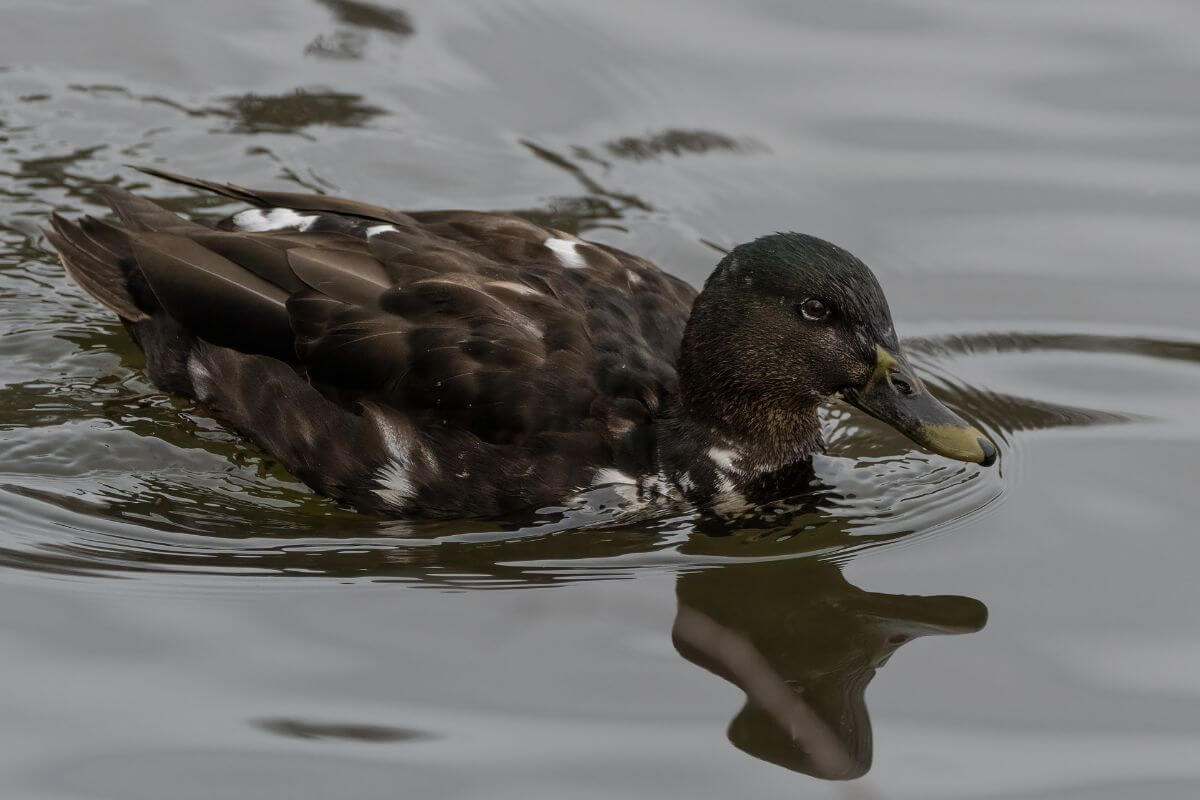
Puddle ducks, known as dabblers, prefer the shallows — ponds, rivers, and marshes. They’re interesting to watch as they ‘dabble’ or ‘tip up,’ plunging their heads beneath the water with their tails sticking out.
You can spot them from a distance by their unique entry and exit, a straight-up rise like a rocket due to their large wings. If identifying them feels like you’re solving a winged mystery, all drake (male) puddle ducks have a brightly colored patch of secondary feathers on the inner, trailing edge of their wings.
Now, let’s get familiar with the Montana puddle ducks and their distinct physical characteristics:
| Species | Description |
|---|---|
| Mallard | A large duck with a green head, dark head, and belly in flight. Common and adaptable, it’s a favorite among hunters. |
| Northern Pintail | Slender, medium-sized with long tail feathers. Brown head, white stripe on neck, recognizable by its long neck and tail in flight. |
| American Wigeon (Baldpate) | Distinct white forehead and green stripe behind the eye. Identified in flight by white belly and forewing. |
| Teal | Small, fast ducks. Cinnamon teal is amber, blue-winged has a white crescent near the bill, and green-winged has a green stripe behind the eye. |
| Gadwall (Gray Duck) | Midsize, brown-gray with a white belly and dark bill. Recognizable in flight by a white, black, and russet wing patch. |
| Northern Shoveler (Spoonbill) | Green-headed, white-breasted with a large, spatula-like bill. Dark head, light chest, and big bill visible in flight. |
Montana is home to a diverse range of puddle ducks, each with their unique characteristics. Whether it’s the distinctive coloring, flight patterns, or feeding behavior, these ducks make the state’s ponds, marshes, and rivers a haven for bird watchers and hunters alike.
Montana Diving Ducks
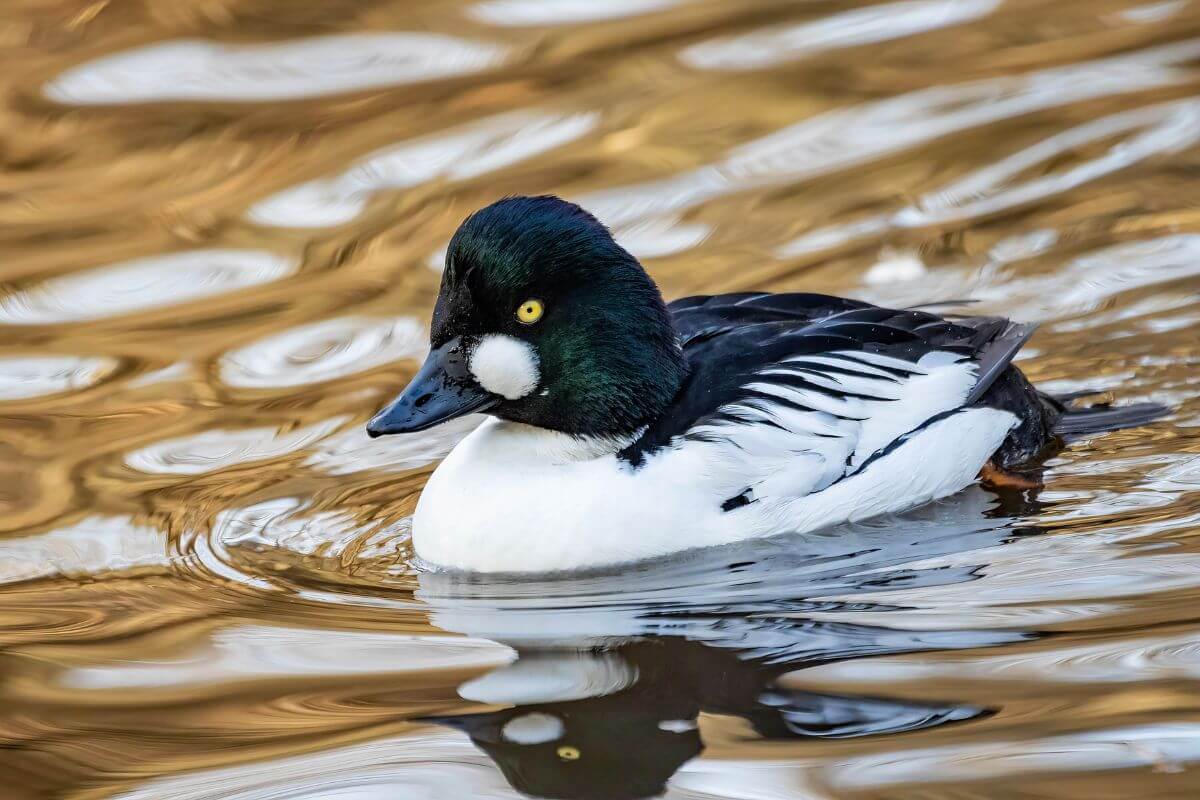
Diving ducks in Montana are the speed racers of the wetlands, predominantly found in expansive water bodies such as Freezeout, Bowdoin, and Flathead Lakes. Their adventurous forays extend to Canyon Ferry, Fort Peck, Hebgen, and Ennis Reservoirs, and sometimes even the Missouri and Yellowstone Rivers.
When these diving ducks are not zipping through the air, they vanish beneath the surface to feast on an underwater buffet of wild celery, mollusks, crustaceans, insects, and sometimes minnows. These ducks are known for their shorter wings and quicker wingbeats, allowing them to move much faster in the air.
Due to their preference for underwater vegetation and swift flying style, divers like the scaup, buffleheads, and goldeneyes are often the stars of their aquatic ballet.
Let’s dive into the different types of diving ducks you may encounter in Montana:
| Species | Description |
|---|---|
| Goldeneye (Whistler) | Midsize with white bodies, dark heads, amber eyes, and white cheek marks. Recognizable by white belly/chest and whistling wingbeats in flight. Common in large rivers late season. |
| Redhead | Midsize, with reddish-brown head, blue bill, and gray body. Hard to identify in flight, often confused with canvasback. |
| Ringneck (Ringbill) | Small, with a dark peaked head and white-ringed blue-gray bill. Difficult to identify in flight. |
| Scaup (Bluebill) | Midsize, dark head/chest/rump, white flanks/undersides, yellow eyes. Identified in flight by white wing stripe, bright white belly, and white underwings. |
| Common Merganser (Fish Duck) | Large, long, slender, black back, white chest, dark green head, red bill. Recognized in flight by straight body/neck and narrow beak. |
| Canvasback (Can) | Large, with red eyes, pale body, black chest, and flat forehead. Identified in flight by extensive white on wings, chest, and back, and large dark reddish-brown head. |
These ducks’ unique characteristics, coupled with their penchant for speed and underwater feeding, make them a joy for hunting enthusiasts and wildlife photographers alike.
Just remember, whether you’re out in a duck blind or watching from the shore, always keep a respectful distance, as we’re just guests in their world.
Montana Hens
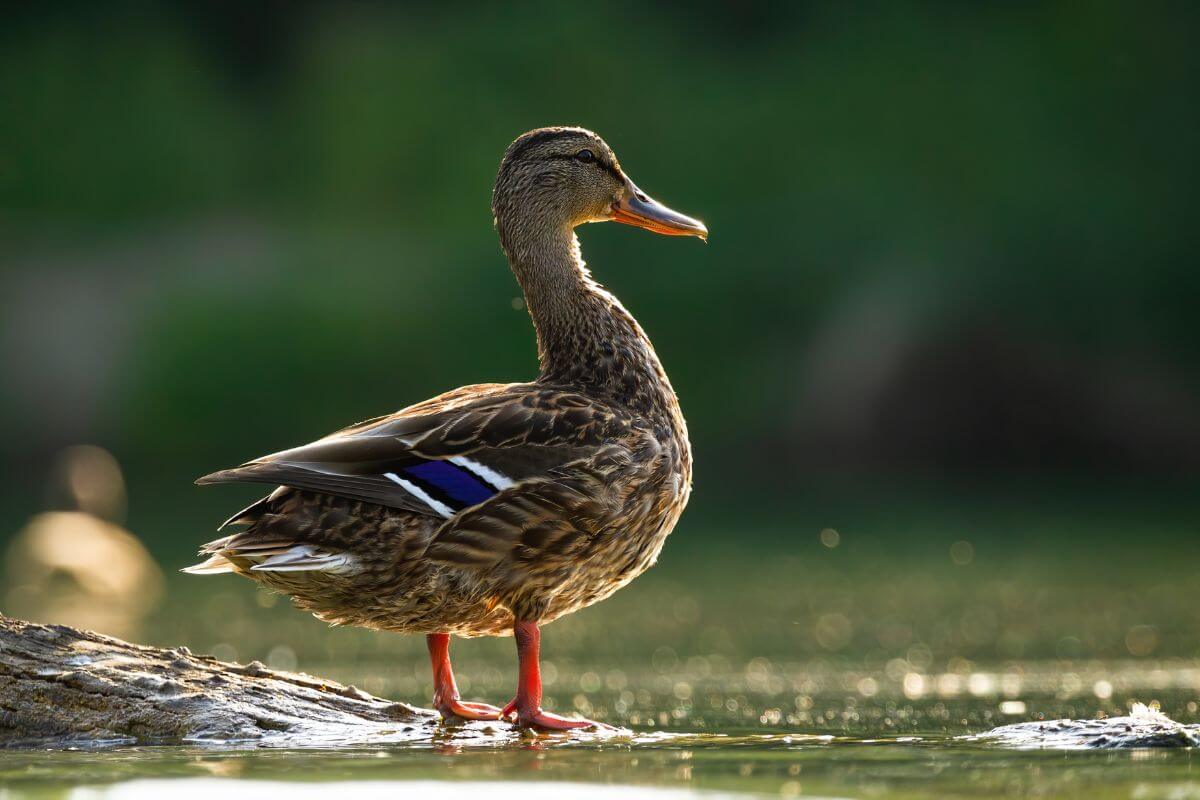
When it comes to duck hunting, even Montana’s lady ducks, known as hens, have their style, making them a tad challenging to spot. It all boils down to the colors and features on their head and bills. Hens primarily uses these unique characteristics to maintain their ambiance.
Let’s explore the various hen species in Montana:
| Hen Species | Head Characteristics | Bill Characteristics |
| Mallard | Brown head, black eye stripe | Orange bill with a dark center |
| Pintail | Gray head | Dark gray bill |
| Gadwall | Brown-gray head | Slender orange bill, dark on top |
| Wigeon | Brown head | Small, black-tipped gray bill |
| Teal | Mottled brown head | Gray bills |
| Shoveler | Brown head | Large, orange, spatula-like bill |
| Canvasback | Brown head, flat forehead sloping | Long, dark gray beak |
| Redhead | Round, brown head | Gray beak with a dark tip |
| Scaup | Brown head | White patch behind a gray bill |
| Ringneck | Brown head | White ring around the front of a blue-gray bill |
| Common Goldeneye | Brown head, amber eyes | Short, dark gray beak |
| Common Merganser | Crested, reddish-brown head | Red bill that is slender and pointed |
Duck hunting is like speed dating – you’ve got to be sharp and observant. It’s not just about the thrill of the hunt; correctly identifying your quarry adds an exhilarating layer of challenge.
Like I always say, the world of hunting is evolving all the time, much like our list of Montana hens. Each species has its charm, so becoming adept at identifying them is the first step to a successful hunt.
Where to Hunt Montana Ducks
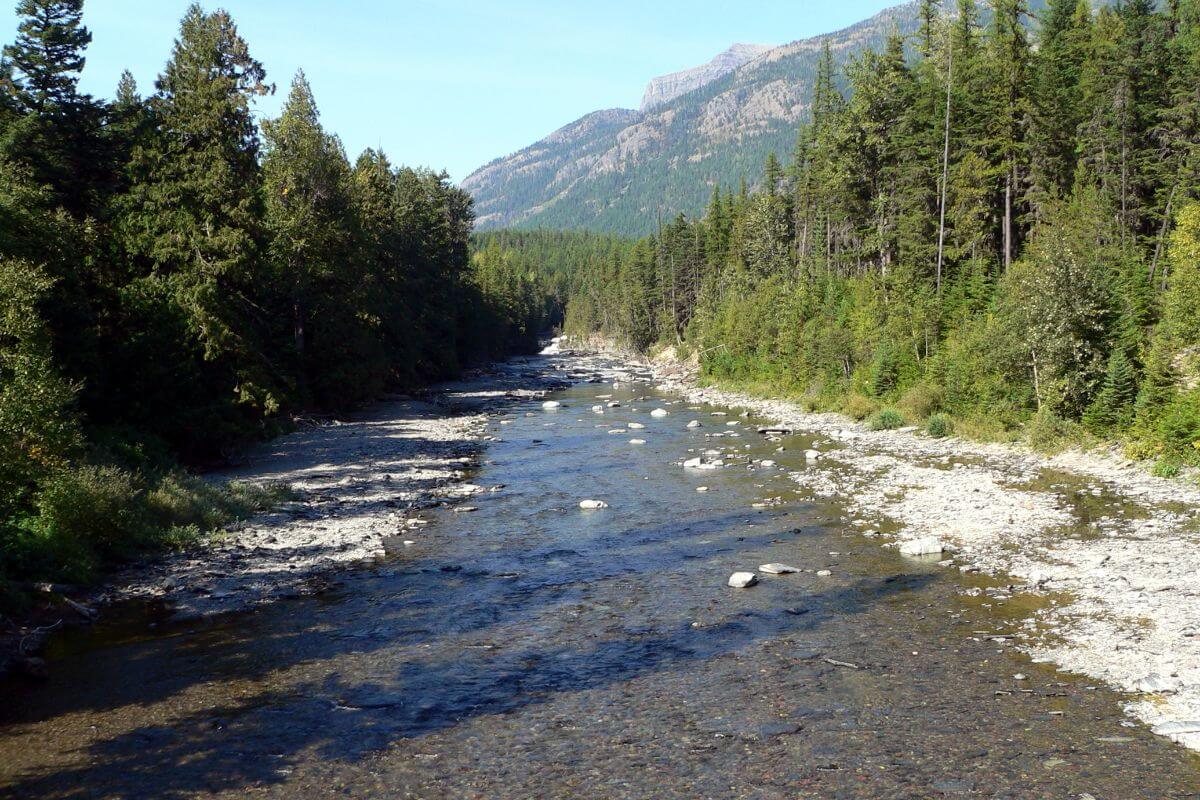
Montana offers a plethora of opportunities for duck hunting throughout the state. However, finding these hunting spots requires time, effort, and scouting.
If you’re a duck hunter looking to spread your wings across Montana, you’re in for a treat. Swathes of land offer the best hunting, and here are some best places in the state:
- Migratory Bird Hotspots – Catching a cloud of ducks as they migrate? Try Montana’s national wildlife refuges, or any of the Waterfowl Production Areas managed by the U.S. Fish and Wildlife Service. State wildlife areas also provide some hunting opportunities for enthusiasts.
- Underestimated Reservoirs and Stock Ponds – Some of these are located on Bureau of Land Management (BLM) land, while others can be found on private property. These water bodies often attract a significant number of ducks early in the season and some cases, until they freeze over.
- Life’s a Stream in Montana – The state’s rivers and creeks can also serve as potential hunting grounds, offering opportunities until the end of the season if they do not freeze over and if enough food is available for waterfowl.
- Block Management Areas – Lastly, many of the Block Management Areas in Montana provide hunting opportunities for waterfowl enthusiasts. These areas are worth exploring for those looking for additional hunting options.
While finding duck hunting spots in Montana may require some effort, there are numerous options available throughout the state, including national wildlife refuges, waterfowl production areas, reservoirs, stock ponds, rivers, creeks, and block management areas.
Just don’t hesitate to consult BLM maps, wildlife service details, and even your local hunting buddies. And remember, it’s not just the spot, but the right timing and conditions that truly make the hunt a rip-roaring success.
Montana Duck Hunting Licenses and Fees
If you’ve got the itch to hunt some waterfowl across Montana’s stunning landscapes, you’re going to need a couple of legal ducks lined up in a row before you can start blasting.
Here’s a rundown of what you need to be able to hunt ducks in Montana:
- The Must-Have Migratory Bird License – All hunters prowling for migratory birds in the Treasure State need an Over the Counter Migratory Bird License. You can grab this from any Montana Fish, Wildlife & Parks (FWP) office or licensed retailer.
- Required Federal Migratory Bird Stamp – If you’re 16 or older, you need a Federal Migratory Bird Stamp to fly across state lines with your spoils. Available from the U.S. Postal Service (USPS) and FWP offices, this stamp is the federal government’s way of saying you’re a certified bird chaser.
- Completing the Survey – Whether you’re a resident or just ducking through, participating in the National Harvest Survey Program (HIP) is the law. You’ve got to complete the pre-season survey with your name, address, and date of birth to grab your Migratory Bird License in Montana or anywhere else.
Now, let’s break down the fees by requirement and age group:
| Requirement | Resident 12-15 | Resident 16-17 | Resident 18-61 | Resident 62+ | Nonresident 12-15 | Nonresident 16-17 | Nonresident 18+ |
|---|---|---|---|---|---|---|---|
| Federal Migratory Bird Stamp | N/A | $25.00 | $25.00 | $25.00 | N/A | $25.00 | $25.00 |
| MT Migratory License | $3.25 | $3.25 | $6.50 | $6.50 | $25.00 | $25.00 | $50.00 |
| Conservation License | $4.00 | $4.00 | $8.00 | $4.00 | $10.00 | $10.00 | $10.00 |
| Base Hunting License | $10.00 | $10.00 | $10.00 | $10.00 | $15.00 | $15.00 | $15.00 |
These fees may not be the most thrilling part of your hunting venture, but even our feathered friends need a little paperwork to participate in their seasonal migration. So grease those gears, fill out those surveys, and set your sights high – Montana’s duck hunting spots await you!
Montana Duck Hunting Season Dates
The Montana duck hunting season generally begins in late September or early October, with a two-day Youth Waterfowl Season the preceding weekend.
It is important to highlight that these dates are provided only as a general reference, and it is crucial to check current regulations or use FWP’s online Hunt Planner for specific dates. Here are Montana’s duck hunting season dates:
| Duck Season | Season Dates |
| Central Flyway Zone 1 | Sept. 30 – Jan. 4 |
| Central Flyway Zone 2 | Sept. 30 – Oct. 8 & Oct. 21 – Jan. 16 |
| Pacific Flyway | Sept. 30 – Jan. 12 |
| Falconry Zone 1 | Sept. 20 – Jan. 4 |
| Falconry Zone 2 | Sept. 20 – Oct. 8 & Oct. 21 – Jan. 16 |
| Special Two-Day Youth Waterfowl Season | Sept. 23-24 |
The Special Two-Day Youth Waterfowl Season season allows lawfully licensed youth ages 15 and under to hunt ducks, mergansers, geese, and coots statewide. The U.S. Fish & Wildlife Service provides these extra two days to encourage youth participation in waterfowling.
But here’s the catch: all these dates are like our weather, ever-changing. So, while this cheat sheet gives you the basic run of the land, for specific dates, check in with Montana Fish, Wildlife & Parks.
Montana Duck Hunting Regulations
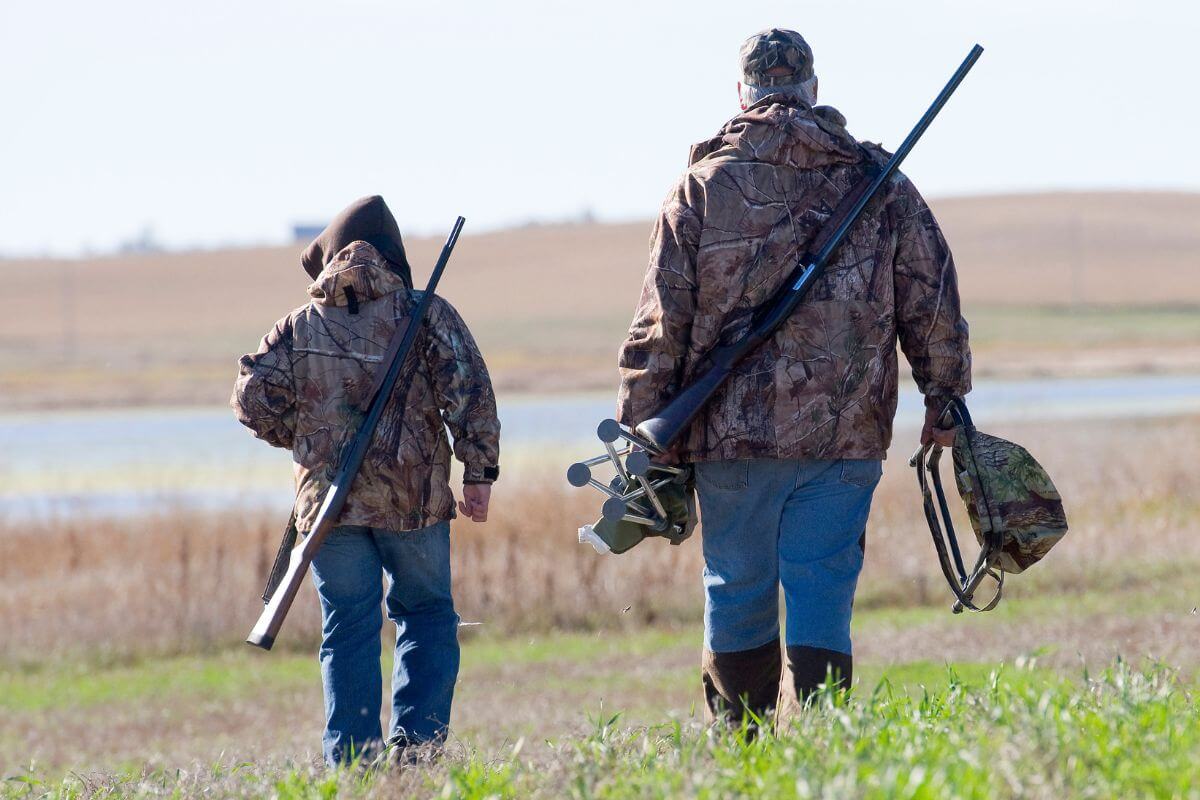
Before setting out for a thrilling duck hunting adventure in Montana’s picturesque landscapes, brushing up on the local regulations is essential to ensure a safe and legal experience.
The Montana Fish, Wildlife & Parks (FWP) presides over the state’s hunting rules, offering guidance that helps conserve the wildlife population while providing enjoyable opportunities for outdoor enthusiasts.
Abiding by these duck hunting regulations isn’t just a matter of legal compliance; it also contributes to the preservation of Montana’s rich natural heritage.
Montana Duck Hunting Rules
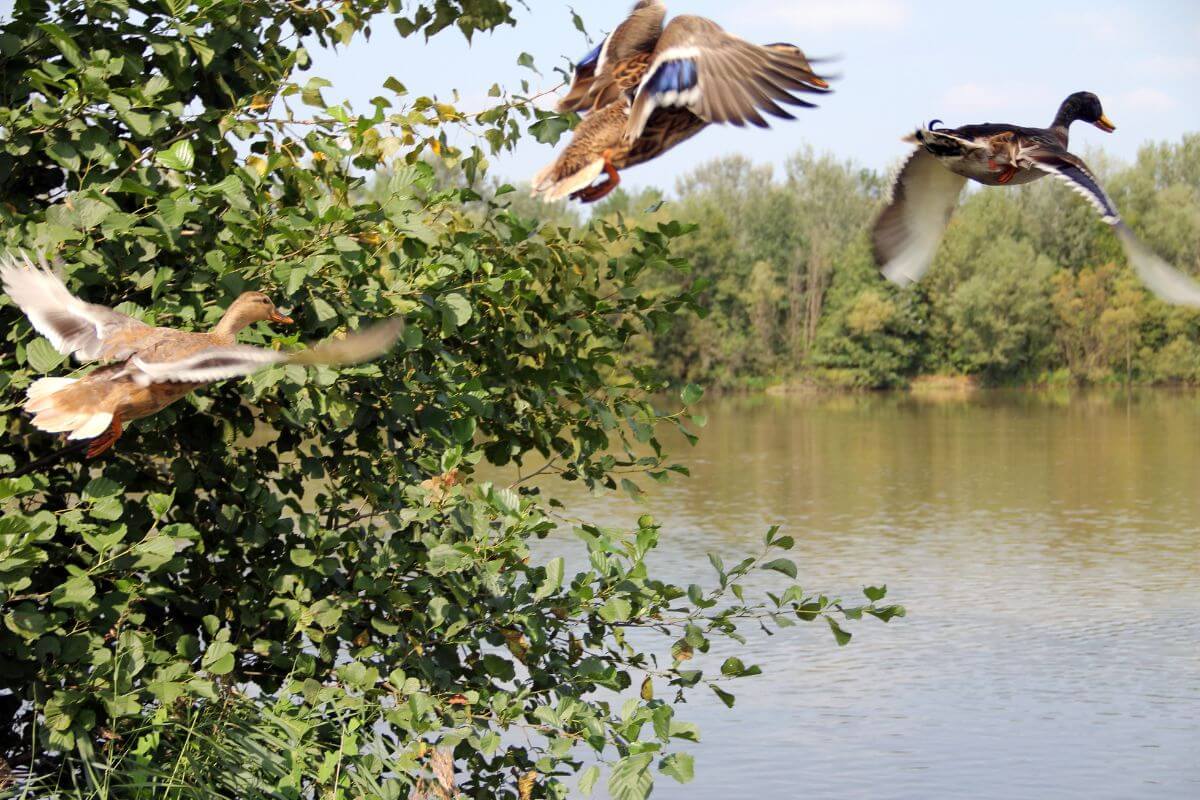
The laid-back nature of Montana isn’t just reflected in its mountain ranges; it extends to hunting rules too. But don’t let that fool you – duck hunting here is heavily regulated. These specific regulations are to ensure the ethical and responsible harvest of migratory game birds.
Here are the main Montana duck hunting regulations you need to know before you gear up:
- Baiting – Baiting is strictly prohibited, meaning hunters cannot hunt waterfowl near any area that has been baited to lure birds.
- Hunting Hours – Hunting hours for migratory game birds are from half an hour before sunrise until sunset, unlike big game and upland game birds, which allow hunting half an hour after sunset.
- Method of Taking – The method of taking migratory birds is limited to long, recurve, or compound bow and arrow, shotguns not larger than 10 gauge with a maximum capacity of three shells, or falconry.
- Nontoxic Shot – Only approved nontoxic shot types can be used when hunting ducks, geese, swans, or coots.
- Possession Limit – Montana is strict about the number of birds you may possess and how they are preserved.
- Selling/Possession of Migratory Game Birds – You can’t sell migratory waterfowl feathers for millinery use, but for fishing flies and similar commercial uses – that’s completely legit.
- Waste of Game – Hunters must make a reasonable effort to retrieve and retain any downed migratory game bird, specifically the breast meat, which is considered suitable for food. Wasting any part of a game bird that is suitable for consumption is against Montana law.
By adhering to these regulations, hunters can enjoy the sport of duck hunting while contributing to the conservation and sustainability efforts for migratory game birds in Montana.
Montana Duck Hunting Bag Limit
When it comes to duck hunting, knowing the bag limits for your region is key. In Montana, the bag limits differ based on which flyway you’re in – the Pacific Flyway or the Central Flyway. Let’s take a closer look:
- Pacific Flyway – The daily bag limit is 7 ducks or mergansers. However, the limit is reduced for certain species: 2 hen mallards, 1 pintail, 2 redheads, 2 canvasbacks, and 2 scaup. Also, the possession limit cannot exceed 3 times the daily bag limit.
- Falconry Pacific Flyway – Hunters are allowed a bag limit of 2 migratory birds per day and can possess up to 6 birds during the regular hunting season.
- Central Flyway – The daily bag limit is 6 ducks or mergansers. It may include 5 mallards (2 hens max), 3 wood ducks, 2 redheads, 2 hooded mergansers, 1 pintail, 2 canvasbacks, and 1 scaup. During the first 9 days of the regular duck season, 2 additional blue-winged teal are allowed. The possession limit is 3 times the daily bag limit of any species and sex.
- Falconry Central Flyway – Hunters can take 2 migratory birds daily and possess up to 6 birds during the regular hunting season and the extended falconry season.
Now, these numbers might seem a bit overwhelming, but they’re crafted to ensure waterfowl populations stay healthy. Always double-check the current regulations and consult with local experts to make sure you’re on the right side of the law.
Montana Outfitters for Waterfowl Hunting

Montana is a duck hunter’s paradise, and sometimes, you just want a reliable guide to make your expedition seamless. A good outfitter is like the X to your treasure map, making out-of-state hunting as easy as navigating your local grocery store.
These locally-grown Montana waterfowl hunting outfitters are the real deal, offering seasoned guides, top-quality gear, and intimate knowledge of the best hunting spots in the state. With their help, you can focus on the thrill of the hunt rather than worrying about logistics.
1. Montana Upland Outfitters

Montana Upland Outfitters offers the best Sharp-tailed Grouse, Pheasant, and Hungarian Partridge hunting on expansive privately managed lands. Nestled on the fringes of Eastern Montana’s dramatic badlands, the camp sets the scene for an adventure straight out of a Western novel.
Montana Upland Outfitters Services Offered:
- 3-Day Upland/Waterfowl Combo – This all-inclusive hunt blends the thrill of waterfowl shooting with upland hunting. Guides get the decoy spread set up, and then it’s just you, the blinds, and some skillful aiming in the sky. You also get to enjoy the wild beauty of Montana as you hunt Sharptail, wild Pheasants, and Hungarian Partridge.
- 3-Day Waterfowl Only – If your heart is set on waterfowl, this is for you. Montana Upland Outfitters leases thousands of acres of private fields, ensuring that you’re hunting always fresh birds. Their priority is quality over quantity – there’s nothing they love more than seeing a group of birds neatly finished in the decoys.
If you opt for the combo hunt, brush up on your upland hunting techniques to make the most of your experience. For waterfowl enthusiasts, the 3-Day Waterfowl Only hunt promises a serene and focused experience.
Why Choose Montana Upland Outfitters:
- Vast, Well-Managed Lands – These private lands are carefully maintained, providing a prime habitat for the birds you’re hunting.
- Low-Hunter Focus – Less emphasis on volume and more on quality ensure a more personal and satisfying hunt.
- Scenic Edge-of-the-Badlands Camp – The setting will make you feel like you’ve stepped back in time to the true Old West.
It’s a tranquil escape from the bustle of city life where you can indulge in your passion for hunting, embrace the frontier spirit, and perhaps come home with a new trophy for your wall.
2. Silver Bow Club
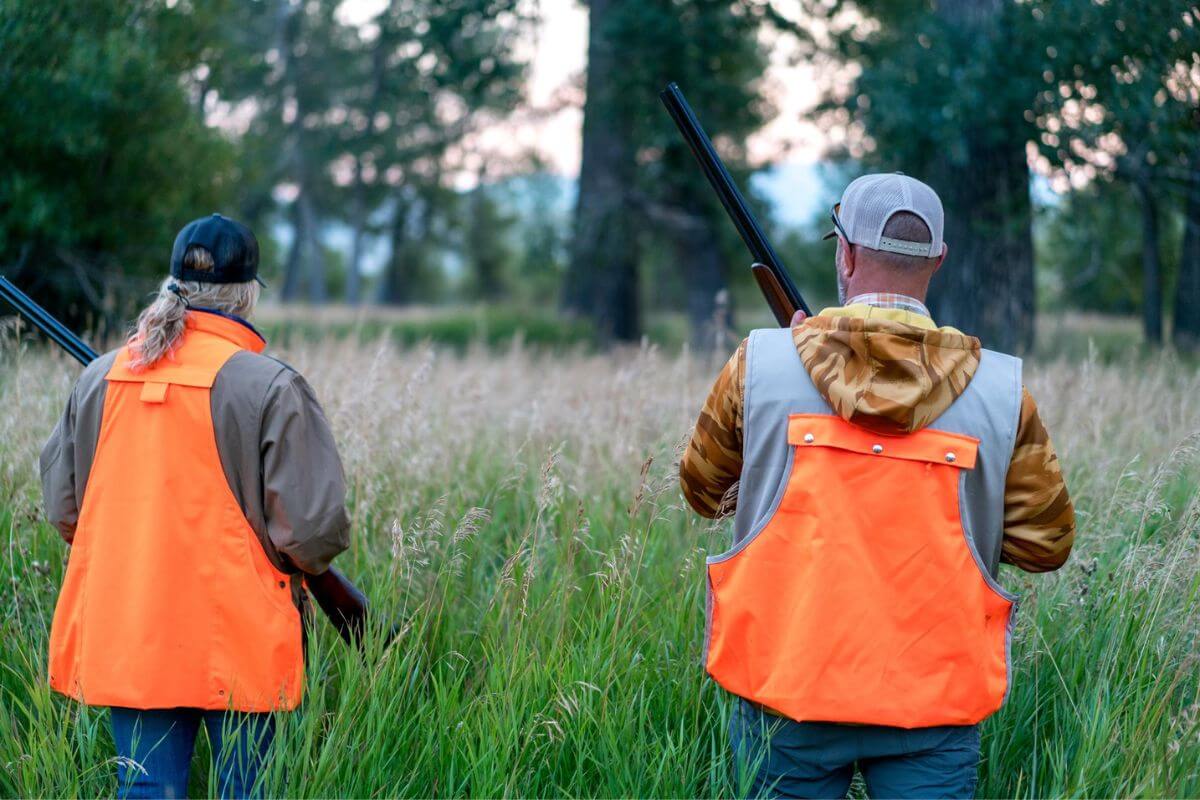
Silver Bow Club is a lovely family-owned retreat in Southwest Montana, and it’s a duck-hunting paradise – with 1800 acres of sprawling wilderness, along with 3 and a half miles (5.6 km) of the Big Hole River, which is so prime that it’s been designated as a Blue Ribbon Trout Stream.
What also sets them apart is their accommodative nature. Trust me, it can be hard to find a spot for the whole squad on a successful hunt. Yet, the Silver Bow Club can cater to up to 6 hunters for duck blind hunts. Be it the solo hunter or a group of friends, the club has you covered.
Apart from the “duck jump” boat hunts, they also offer the comfort of blind hunting for mallards and geese for up to 6 hunters, who can bring their own trained dogs. They provide kennels in their all-inclusive Grand Lodge for visiting duck dogs and pets are welcome in their cabins, infusing a touch of the familiar in this untamed landscape.
So whether it’s silently floating down the river to ‘jump’ ducks as they rest in backwater eddies, or going after mallards and geese from a blind, Silver Bow Club offers a truly unique duck hunting experience.
A visit to the club with your dog at your side will make for an unforgettable trip that hits all the right targets – nature, fun, and community.
3. River Rock Outfitters

River Rock Outfitters, the key players on the Bighorn River landscape since 1997, are exceptionally drilled in leading waterfowl and fly fishing escapades. They boast of being the solitary outfit with duck and goose hunting etched as their core mission.
Why I Recommend River Rock Outfitters:
- Focused Expertise – River Rock Outfitters doesn’t dabble. Their guides use a combination of different types of blinds to flocks of mallards directly above the decoys.
- Licensed Guides – At River Rock, they choose folks who are licensed, insured guides, and renowned for their temper and hunting knowledge, ensuring an enjoyable and educational trip.
- Harvesting Success – With an arsenal of natural, layout, and panel blinds, they create the perfect shooting scenarios, ultimately leading to a high success rate in harvesting waterfowls.
In a world where some outfitters offer joint “Cast n Blast” trips, where you both fish and hunt the same day, River Rock steers clear of that approach. They believe in focus, so you’re either hunting or fishing, but not both on the same day.
River Rock Outfitters is a must-try for those serious about duck and goose hunting. With nature-bound experts who stay true to the species they chase, they very efficiently bring the sky to your decoys.
Montana Duck Hunting Final Thoughts
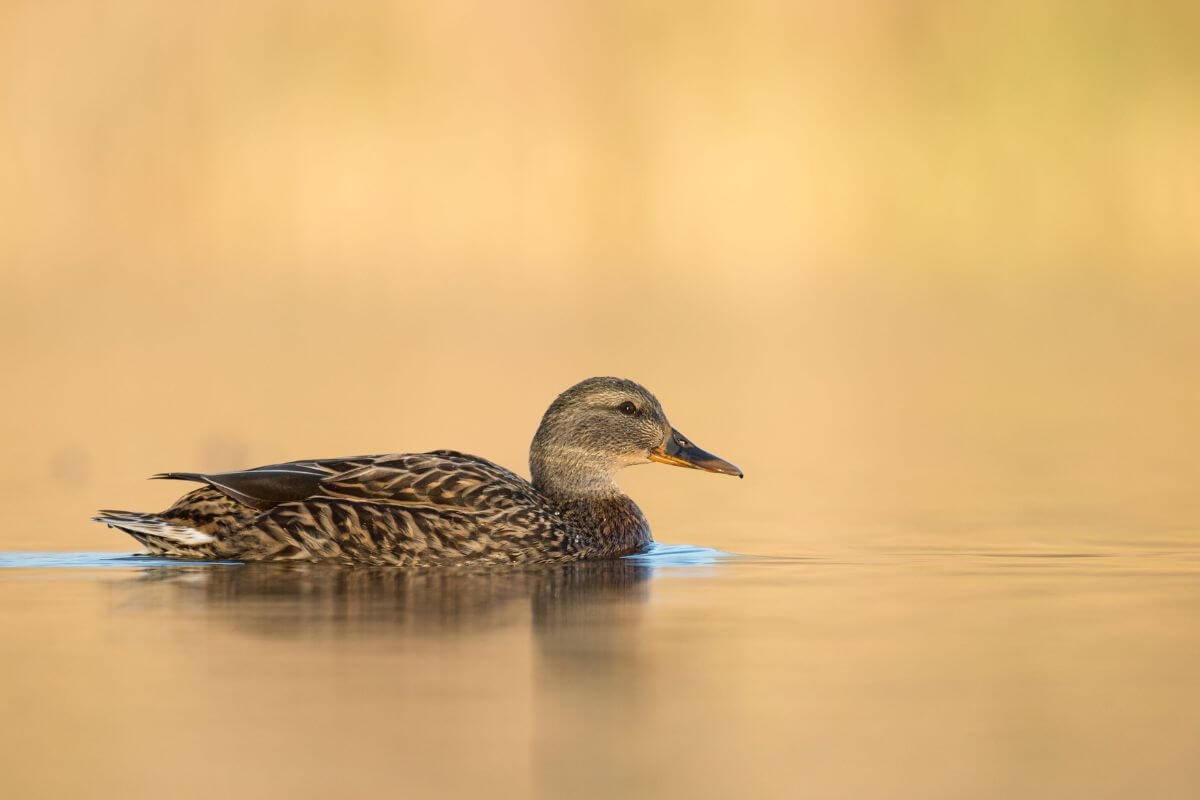
Montana’s duck hunting scene is a diverse and thrilling pursuit, offering an array of species to challenge and delight both avid migratory bird hunters and wildlife enthusiasts. From the Mallards to Northern Pintails, each duck species contributes to the rich tapestry of the state’s waterfowl population.
As you spread your wings in Montana’s duck hunting domains, remember to respect the natural habitats of these feathered friends, which are scattered across national wildlife refuges, expansive water bodies, and resilient rivers.
The state’s regulated hunting seasons, essential knowledge on bag limits, and critical regional regulations by Montana Fish, Wildlife & Parks are your compass, guiding you to a safe and sustainable hunting experience.
So, grease those gears, fill out those surveys, and set your sights high – Montana’s duck hunting spots await you! Whether you’re a seasoned hunter or taking your first shot in the world of waterfowl, Montana’s landscapes and diverse duck species have something truly special in store for you.
Montana Duck Hunting FAQs
1. Is There Good Duck Hunting in Montana?
Montana offers good duck hunting opportunities, especially in its numerous wetlands, lakes, and rivers. The state’s diverse habitats attract various waterfowl species during migration, providing hunters with the chance to pursue ducks in different landscapes throughout the hunting season.
2. How Many Mallards Can You Shoot in Montana?
Waterfowl hunting regulations, including mallard limits, may differ between the Pacific and Central Flyways in Montana. In the Pacific Flyway portion, the daily limit is typically 2 hen mallards, while in the Central Flyway, the daily limit is 5 mallards with no more than 2 allowed to be hens.
3. What Kind of Ducks Does Montana Have?
Montana is home to a diverse array of ducks, including species commonly found in the region during migration and breeding seasons.
This can include mallards, northern pintails, gadwalls, canvasbacks, redhead ducks, wood ducks, and various species of mergansers, providing waterfowl hunters with a variety of opportunities across the state’s wetlands, lakes, and rivers.
4. Where Is the Best Duck Hunting in Montana?
The Beaverhead River is recognized as one of the prime locations for duck hunting in Montana. The river’s winding course, abundant warm springs, and adjacent wetlands, along with extensive agricultural lands nearby, create an ideal habitat for ducks.
The area is known for supporting large populations of ducks, offering waterfowl hunters excellent opportunities in this region of Montana.
5. What Is the Duck Limit in Montana?
The daily bag limit for ducks in Montana can vary based on the designated flyway. In the Pacific Flyway portion of Montana, the daily limit is typically 7 ducks, while in the Central Flyway, it is 6 ducks.
Continue your Montana exploration through our related articles below:
- Guide to Hunting Bison in Montana
- Montana Deer Hunting Guide
- Hunting Elk in Big Sky Country
- Hunter’s License in Montana
- https://fwp.mt.gov/hunt/regulations/migratory-bird
- https://fwp.mt.gov/binaries/content/assets/fwp/montana-outdoors/duckid.pdf
- https://fwp.mt.gov/binaries/content/assets/fwp/hunt/regulations/2023/2023-mig-bird–webless-final-for-web.pdf
- https://www.facebook.com/photo/?fbid=465895102219171&set=a.465895068885841
- https://www.facebook.com/SilverBowClub/photos/pb.100063492136579.-2207520000/4182985845069838/?type=3
- https://www.facebook.com/photo.php?fbid=1003130001128872&set=pb.100042956450328.-2207520000&type=3

